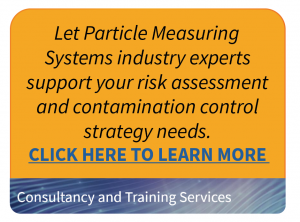In this final blog of our recent basic particle knowledge series, we look at particle counters and Statistical Process Control (SPC) and how their combined effort can be used to prevent particle excursion events before they happen.
What is SPC?
Statistical Process Control (SPC) is how a system or process is continuously monitored to identify unexpected events. The goal of cleanroom cleanliness control is to deploy particle counters or monitors in meaningful ways to determine the initial overall particle count levels, and then to enable adequate SPC methods on an ongoing basis. Whether the endeavor is initial certification, cleanroom health spot checks, or sustaining efforts, the basics of metrology performance as defined by the SPC methodology is instructive when choosing a specific particle counter and when considering the differences between counters when there is a “mismatch”.
What do I need for Statistical Process Control for Particle Counters?
The basis of SPC is to strategically use a metrology instrument, or system of instruments, to sample or measure one or more critical-to-success (CTS) parameters. With this data, the process mean and standard deviation (STDEV) of the CTS parameter can be calculated. Once the mean and STDEV of have been established to characterize the systems normal variation (common cause variation), ongoing sample measurements can be used in conjunction with various SPC tools (e.g., x-chart, x-bar, and R chart) to identify in real-time when unexpected changes (special cause variation) has occurred.
With aerosol particle counts in a cleanroom environment, the occurrence of a special cause variation (such as a particle excursion) should illicit a response from process owners to investigate the cleanroom to identify and possibly eliminate the conditions that allow the particle spike. Conversely, a special cause variation of low particle counts can cause owners to replicate conditions if they lead to favorable outcomes.
Particle Counters and Statistical Process Control (SPC)
A particle counter should have strong:
- counting efficiency
- size resolution
- maximum permissible error
- adequate calibration traceable to accepted common standards
- demonstration of stability between calibration,
With these attributes, the particle counter instrument variation will be statistically stable with results that contribute an acceptable source of common cause variation to the overall variation. Counters that statistically demonstrate this can be said to have good repeatability and reproducibility, making them an effective SPC metrology instrument. This is true even when they are not “matched” with counters of another type.
Matching Particle Counters
One advantage of having counters match as closely as possible is that the same mean and standard deviation can be applied in the SPC tools in those areas with the matched counters. However, if counters are deployed in different areas, or counters are not perfectly matched, SPC tools can still be applied to certify, spot check, and sustain cleanroom control by using a slightly unique mean and standard deviation that will flag the occurrence of special cause variation in a given area and specific particle counter application.
Learn more… Get the full paper here.

